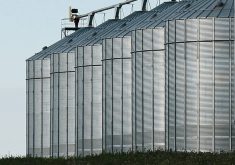Canada may be falling behind other countries on organic production as demand for goods increases but production stagnates.
If Canadian food manufacturers can’t count on a domestic supply of organic crops, it could mean more imports from foreign markets at a time when Canada’s trade future is already volatile. But to bridge the gap, producers will need more support than they’re getting, industry members say.
Why it matters: If Canadian companies can’t source enough organic Canadian crops, American or other foreign imports may be needed to fill the demand.
Read Also

Budget 2025 includes trade focus, boost for agriculture risk management
The 2025 budget includes several investments relevant to the agriculture sector, including new trade corridors and financial supports for farmers
The demand for Canadian organic products is growing, both domestically and abroad said Katie Fettes, Director of Policy and Research at Canadian Organic Growers (COG).
“On the global and macroeconomic level, we’re seeing there’s an opportunity here,” Fettes said. “At the same time in Canada, our production has kind of stagnated.”
The Canadian organic market was valued at $9 billion in 2023, up from $6.3 billion in 2019, according to statistics from the Canada Organic Trade Association. In that four-year period, the numbers of certified organic acres and operators have stayed relatively the same.
This means the gap between Canada’s demand for organic goods and capacity to produce them is only widening.
Other countries investing more
Fettes said other world economies have seen economic and environmental potential in organic growing.
“G7 countries are seeing, you know, this is an opportunity and a kind of ready-made tool that we can take up and advance both environmental and economic goals at the same time,” she said.
According to upcoming research from Canadian Organic Growers, set to release in July, the U.S. spends eight times more per acre on organic than Canada. Japan spends nearly 80 times more, and the EU spends on average 200 times more. In Italy, it’s close to 900 times more.
Salma Fotovat, Sourcing and Procurement Director at Riverside Natural Foods, said she foresees problems if producers aren’t able to keep up with the processing sector’s demand.
“There’s going to be a supply and demand issue here,” she said, adding it may already be happening.
Fotovat said Riverside has tried to support organic farmers for stability’s sake.
“What we’ve done … is provide that stability of market access or market demand over multiple years,” she said. “We talk to our growers and kind of do multi-year contracts, which is not very common in the organic commodity space.”
“That gives them stability and line of sight that okay, if I continue to be in this space, if I continue to invest, there is home for the commodities that I work hard to grow.”
Organic farmers lack support
Riverside is a 12-year-old company, which has been growing 30 to 40 per cent year-over-year and uses 95 per cent organic ingredients, said Fotovat. With stagnating growth in production, Canadian farmers may not be able to meet that processing demand.
“Businesses can do a lot, and I think we’re trying to leverage our position, our scale, our network, our sphere of influence, to do that,” she said. “The demand is there; I think we need support on the supply side to be able to keep up.”
Extension supports are often lacking for organic growers said Ian Cushon, an organic grain farmer in Oxbow, Saskatchewan and Organic Task Force Co-Chair.
“There’s not very many agronomists that really understand organic agriculture,” he said.
Fotovat said companies like hers are taking those supports into their own hands.
“We support them (with) agronomists with tools, resources, networking around organic regenerative practices and how to adopt … practices that allow them to be more resilient, better soil health, better yields in time of drought.”
Fettes said the sector also needs better data, research and analysis — information government officials request when the sector asks for support.
Support through transition
One of the main barriers to organic production in Canada is the three-year period in which farmers must adhere to organic standards before being awarded organic certification.
Cushon said these short-term pains make it difficult for farmers to make the leap to organic. The organic task force recommends supporting farmers through the additional costs in that phase.
Fettes said the upcoming COG research suggests the financial setbacks of that three-year period almost always pay off eventually.
Cushon’s farm transitioned to organic in the early 1980s, while looking for new opportunities during a time of financial turmoil.
“Organic kind of came along, and that was an opportunity to become a little more resilient economically.”
He said consumer interest fell off during the 2008 financial crisis, but it bounced back significantly in the 2010s. This type of transition won’t be easy for all Canadian farms, though.
“It’s a really hard thing to predict,” he said. “There isn’t the kind of data collection there on supply and demand that you see in the conventional market with organic products.”
“There’s a chicken-and-egg scenario there that we’ve certainly grown the retail side, but we haven’t necessarily grown the production side to a level that attracts some of the bigger processors and some of the bigger retailers.”
Opportunity to invest
Fettes said she sees an opportunity for the government to go beyond its regulatory approach and invest in the sector.
“This is the time when Canada’s talking about investing and building the economy and building a stronger Canada,” she said. “This is the moment to move, for the organic sector, from a regulatory approach into a partnership and investing approach.”
This is an area where Canada can learn from its G7 peers.
“Many jurisdictions in Europe have been supporting organics with organic action like policy plans for a decade or two by now. They’re just a little bit further along,” Fettes said.
“There’s a huge opportunity to invest more, both in production for organics and also in organic market development.”
Cushon said there is potential for organic farming and many benefits many producers may not know about. But it’s a two-way street.
“There’s quite a long list of things I think we can do, and it it’s a matter whether the willingness is there to make that investment and to make sure that producers know that there are opportunities here.”













